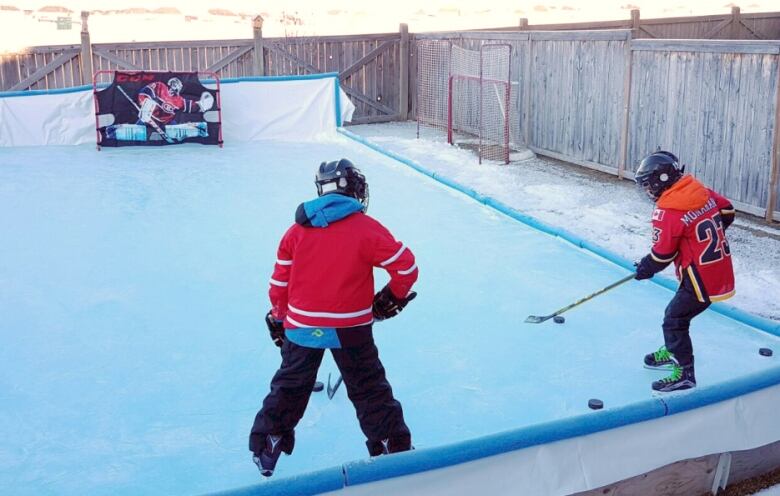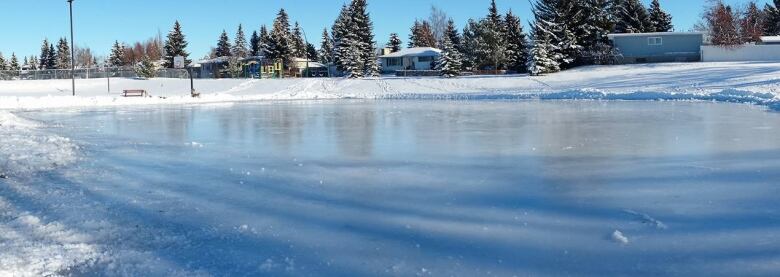Nice ice: How to make the best outdoor skating rink
Build as thick a crust as you can, like pizza, says Calgary dad and icemaker
Originally published Dec. 15.
There's nothing quite as nice as silky, smooth ice.
No one enjoys skating on an outdoor rink riddled with divots and craters. Thankfully, Canada has an army of dedicated rinkmasters.
With wind, sleet and snow nipping at their noses, these volunteers spend countless hours outside maintaining their community rinks.
In honour of Canada's ultimate winter pastime, we asked some of Calgary's most dedicated rinkmasters to share their ice making secrets.
- Are you a rinkmaster? How do you keep your iceskating surface ultra smooth all winter long? Leave your comments below.
'Lakes of layers'
When it comes to building a safe and solid ice surface temperature is key.
Dave Nagel says the sweet spot is between 7 and 20 C.
"That's actually when you're going to get the best ice. That's when it forms the quickest and the crispest," said Nagel, who has been flooding the Braeside community rink for the last six years.
"I like a big block of ice underneath and I like to keep putting lakes of layers," he said.

But Sam Shariffhas adifferent set of rules. He built his own privaterink behind his homein northwest Calgary.
"Ideally you should flood right before a severe cold spell, around 2 C is good. Timing is everything."
Avoid the deep freeze
When the mercury drops below 20 C, most rinkmasters will hang up their hoses.
Shariff says you should never flood during a cold snap because it produces brittle ice that easily cracks.
If that does happen, Shariff says you just need to wait until the temperature rises. Then fill the cracks immediately with a mixture of of water and snow and give your rink a warm water bath to smooth things out.

Shell ice is not nice
The other thing that happens when you try to flood a rink below 20 C is the formation of small air pockets, called shell ice.
"It can cause a really bumpy surface that can be a tripping hazard, which just makes for an uneven ice surface for the rest of the season which is really hard to overcome," said Julie Guimond with Calgary Parks.
It's not rocket science. Everyone's gota freezer and an ice cube tray.- Dave Nagel, volunteer rinkmaster
Guimond is also the spokesperson for the city's Adopt-A-Rink program, which provides training and supplies to 45 neighbourhood-run rinks.
She said it's also not safe to flood a rink below 20 C.
"There's a possibility of getting that water onto your hands or on your clothing and feet and that can cause some real severe injuries and frostbite."
And if the temperature is too cold, Shariff said the water will actually freeze as it comes out of the hose.

The pizza analogy
Nagel likes to build his ice surface base from the outside, in.
"If you start on the outskirts, it's naturally going to flood into the the centre," he said. "As thick a crust as you can, like a pizza."

"It's not rocket science. Everyone's gota freezer and an ice cube tray."
Nagel says once he has an even base, he begins building up extra layers on the side of the rink that gets the most sun exposure and melts the quickest.
"Skate as much as you can," said Shariff. "Because spring can sneak up on you before you know it."
With files from the CBC's Mike Symington













_(720p).jpg)


 OFFICIAL HD MUSIC VIDEO.jpg)
.jpg)



























































































